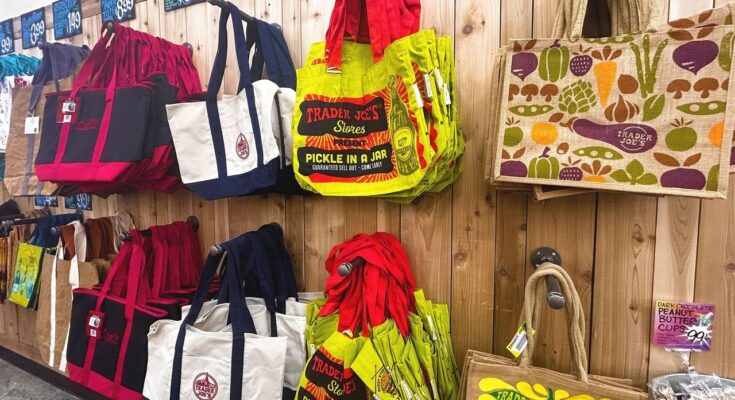Since they were first made, reusable grocery bags have come a long way. They used to be simple cloth bags, but now they come in cool, eco-friendly styles that fit the needs of modern shoppers. People are changing their habits because they are becoming more aware of how to protect the Earth and use less plastic. Reusable bags have changed over time to reflect both changes in design and function and a greater concern for the health of the planet.
The Early Days of Reusable Bags
The idea of using reusable bags is not a new one. Early civilizations used bags made from natural materials such as leather, cotton, and jute to carry goods. These bags were simple, durable, and environmentally friendly, aligning with the sustainable practices of their time. However, as the plastic revolution took hold in the mid-20th century, the use of disposable plastic bags surged. Even though these bags were cheap and easy to use, they were very bad for the earth because they didn’t break down.
It wasn’t until the 1980s and 1990s that the concept of reusable grocery bags began to regain popularity. With growing environmental concerns about plastic pollution, especially in oceans, people started to look for alternatives. Initially, reusable bags were primarily made from cloth, often cotton or canvas, and were seen as a “green” option for conscientious shoppers.
The Rise of Eco-Friendly Materials
As the movement to protect the environment grew in the early 2000s, designers and makers started looking into making reusable bags out of materials that would last longer. The move toward eco-friendly materials was a big step forward in the history of reusable bags. Many recycled things were used to make these bags, like hemp, organic cotton, and PET (polyethylene terephthalate) bottles.
Plastic bags that aren’t made of thread were one of the most important turning points in this growth. These bags quickly became a favorite among shoppers because they were cheap, durable, and easy to carry. Non-woven polypropylene bags could be made in many colors and styles, which made them a useful choice for both home and business use.
During this time, “bag for life” ads started to spread, telling people to stop using single-use plastic bags and start using ones that can be used more than once. More people are using reusable bags at grocery stores because of these efforts that made it clear how important it is to cut down on plastic waste.
The Emergence of Stylish and Functional Designs
By the 2010s, reusable grocery bags had evolved into much more than a simple environmental solution. Consumers began to demand not only functionality but also style and convenience. This demand led to the creation of bags that were not only durable and spacious but also fashionable and practical for everyday use.
Many reusable bags now feature ergonomic handles, foldable designs, and convenient storage options, making them easy to carry and store. Some bags even come with additional compartments to organize groceries, while others have insulated linings to keep food at the right temperature.
One thing that helped reusable bags change over time was the rise of tailoring. Customers could add their own logos or designs to the bags, and many brands and stores started to offer customizable choices. Not only did this make reusable bags cool, but it also gave businesses a great way to sell themselves.
Innovations in Material and Design
In recent years, designers have pushed the boundaries of reusable grocery bag designs, incorporating innovative materials and features that further enhance their functionality and sustainability. For instance, some companies have introduced bags made from recycled ocean plastics, helping to tackle both plastic waste and marine pollution.
There has also been an increase in bags designed for specific purposes, such as those with reinforced bottoms for carrying heavy items, bags with compartments for wine bottles, and bags that are resistant to spills and leaks. These bags combine style, durability, and practicality, addressing the diverse needs of shoppers.
Moreover, the development of bags with advanced folding mechanisms, like compact and pouchable designs, has made it easier for people to carry them on the go. These collapsible bags can be tucked into a purse or pocket, ensuring that shoppers always have a reusable option with them, thus reducing the temptation to grab a plastic bag.
READ MORE : 5 Fun Activities to Do When Group Traveling to Brussels
The Future of Reusable Grocery Bags
The future of reusable bags looks promising, with ongoing innovations in both materials and designs. With increasing environmental awareness, designers are likely to continue exploring biodegradable, recyclable, and sustainable materials. We may see more bags made from plant-based fibers or even edible materials in the future.
Moreover, the emphasis on convenience and functionality will likely continue to shape the evolution of reusable grocery bags. The goal will be to create bags that are not only eco-friendly but also highly practical and durable, catering to the busy lives of modern consumers.
Conclusion
The evolution of reusable grocery bags has come a long way, from humble cloth sacks to high-tech, stylish, and eco-conscious designs. Today, these bags play a crucial role in reducing plastic waste and encouraging sustainable shopping habits. As material innovations and design improvements continue to emerge, reusable bags will likely remain an essential part of our daily lives, helping us protect the planet for future generations.




